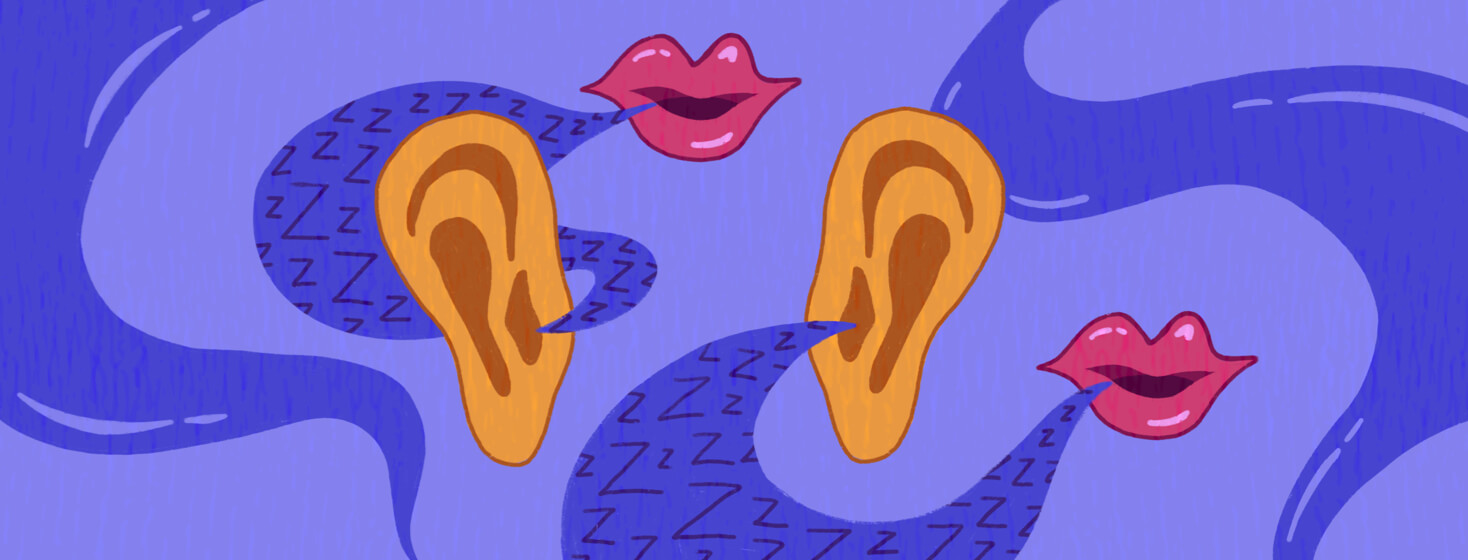Sleep Awareness Week®: Ways to Raise Awareness About Your Sleep Disorder
March 12 through 18 is both the week following the time change (boo!) and National Sleep Foundation’s Sleep Awareness Week® (yay!).
As you likely know, many people don’t know much about sleep disorders like narcolepsy, restless legs syndrome, sleep apnea, or insomnia unless they already live with them.
Have you thought about how you might raise awareness around your sleep disorder? Check out these possibilities.
And if you want to share or hear from the community along the way, start with our forums page by clicking the button below!
Raising awareness through communication
As a writer, I possess that skill set, but this doesn’t mean you need professional writing skills to tell your story.
Artistic expression
Other forms of artmaking can create evocative storytelling moments that raise awareness. Maybe you like making small little films, or dance, or play music, or paint or sculpt? Translating your lived experience with sleep disorders artfully can reach several people at once.
Sharing in the workplace
Communications at your workplace can help. Maybe you work within a major institution (education, healthcare, government). Can you find a way to tie in your sleep disorder to the kind of work you do? For instance, a person who works in a suite of offices might post brochures or flyers in the break room that highlight the risks of poor sleep to raise awareness.
Sharing with a purpose
If you’re retired, your former employer may wish you would talk about your sleep disorder to workers who may need solutions to become safer, more effective employees. Someone with sleep apnea may share stories about related drowsy driving; someone speaking about first-hand narcolepsy may attract students, teachers, and administrators on campus. Even stay-at-home parents or caregivers of the elderly or disabled can find live small group opportunities or online forums to share their insights about living with insomnia or restless legs.
What you can do
Some things you can do to communicate awareness of your sleep disorders:
- Sign petitions. We can all demand more and better funding for sleep disorder research and enforcement of the Americans with Disabilities Act for people with sleep disorders who face job discrimination.
- Pen letters to the editor. Sharing your perspective about drowsy driving’s links to sleep apnea is a subject vital to the safety of an entire community. Letters to the editor can also raise awareness by thanking volunteers at your local sleep disorder support group. What else can you share that might raise awareness in your community?
- Reach out to leaders. Send emails and tag tweets to public office candidates asking them to consider the needs of people with chronic and/or rare sleep disorders like sleep apnea and narcolepsy whenever discussions about healthcare equity arise.
Raising awareness through social media
The value of social media lies in its ability to reach many more people through Twitter, Facebook, Instagram, TikTok, or forums. Sharing tips, personal experiences, ideas, rants, raves, videos, jokes, inspiration, or any other content in social media generally doesn’t take a lot of time or effort. It’s worth the trouble, and who knows? Maybe you’ll go viral!
Also, remember the lurkers when you post. Sometimes the one-off comment you share about dealing with sleep disorder medications may just be the one thing someone needs to get through the day. Or, maybe someone else worries about their loved one’s struggles with sleep; something you post might encourage them to take action or practice more empathy.
What you can do on social media
Try these ideas:
- Brand your profile page: During awareness weeks, use frames or stickers around your avatar to spotlight your sleep disorder. Decorate with sleep-related wallpaper. Make sure you attach compelling related images to those posts, wherever they land.
- I wasn’t kidding — use hashtags to attract attention: #Apnea #CPAP #DrowsyDriving #HealthyHours #HealthySleep #ICantSleep #Insomnia #InsomniaAwareness #Narcolepsy #NarcolepsyAwareness #OSA #RestlessLegs #RestlessLegsAwareness #RLS #Sleep #SleepApnea #SleepApneaAwareness #SleepAwareness #SleepDisorder #SleepHealth #Sleepless #SleepTips #SleepWell #StopSnoring
- Share quality content: Try uploading video interviews, posts from blogs you follow, recent articles you want to recommend, and helpful infographics about sleep disorders to all your channels.
- Follow and engage with sleep disorder influencers: Not only does it raise awareness, but you’ll make friends for life in the bargain.
- Discuss misconceptions about your sleep disorders online: Behold the teachable moment! Plus, people who share in your challenges will realize they’re not alone.
- Be a guest! Whether it’s a blog, a live chat, a podcast, or YouTube event, sharing your experience with sleep disorders does a few things: it raises awareness, empowers others with the same disorders to take action, and humanizes medical discussions. You really can inspire someone with your personal story.
Raising awareness IRL (in real life)
As an “extroverted introvert,” I’ve done these things face-to-face in the name of sleep health awareness:
- Participated in organized awareness events and related fundraisers. Bring your friends and family, and ask for donations at work or from neighbors. This can personalize awareness.
- Dressed as a sleep health “signboard.” Don T-shirts and hoodies with sleep health themes on them. To stimulate conversations, wear pins, badges, temporary tattoos, awareness ribbons, hats, and rubberized bracelets.
What does awareness mean to you? What can you do to help raise awareness about sleep apnea?

Join the conversation